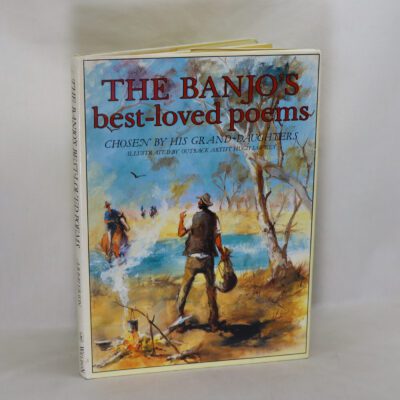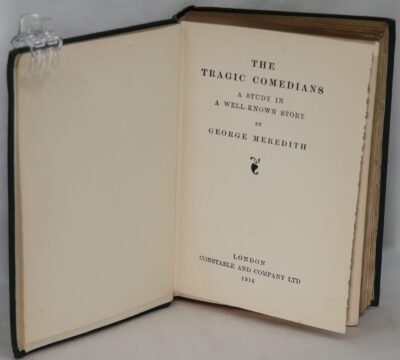Tristam & Isoude.
By Evelyn Paul
Printed: 1920
Publisher: George G Harrap & Co.
| Dimensions | 19 × 25 × 3 cm |
|---|---|
| Language |
Language: English
Size (cminches): 19 x 25 x 3
Condition: Very good (See explanation of ratings)
Item information
Description
Unusual brown leather binding with embossed title on the front board. Spine attached by riveting to the boards. Illuminated by Evelyn Paul.
We provide an in-depth photographic presentation of this item to stimulate your feeling and touch. More traditional book descriptions are immediately available.
- Note: This book carries a £5.00 discount to those that subscribe to the F.B.A. mailing list
Hardbound. Four color plates in Celtic design, twelve additional color plates, illustrations and numerous designs within the text;color Celtic designed endpapers. The tragic romance of Tristram and Isolde is beautifully captured in Paul’s lush illustrations. Notable for the decorative initials in Celtic style.
Tristan and Iseult, also known as Tristan and Isolde and other names, is a medieval chivalric romance told in numerous variations since the 12th century. Of disputed source, usually assumed to be primarily Celtic, the tale is a tragedy about the illicit love between the Cornish knight Tristan and the Irish princess Iseult in the days of King Arthur. It depicts Tristan’s mission to escort Iseult from Ireland to marry his uncle, King Mark of Cornwall. On the journey, Tristan and Iseult ingest a love potion, instigating a forbidden love affair between them.
The legend has had a lasting impact on Western culture. Its different versions exist in many European texts in various languages from the Middle Ages. The earliest instances take two primary forms: the so-called courtly and common branches, respectively associated with the 12th-century poems of Thomas of Britain and Béroul, the latter believed to reflect a now-lost original tale. A subsequent version emerged in the 13th century in the wake of the greatly expanded Prose Tristan, merging Tristan’s romance more thoroughly with the legends of King Arthur, with Tristan becoming one of his Knights of the Round Table. Finally, after the revived interest in the medieval era in the 19th century under the influence of Romantic nationalism, the story has continued to be popular in the modern era, notably Wagner’s operatic adaptation.
Condition notes
Want to know more about this item?

Share this Page with a friend















